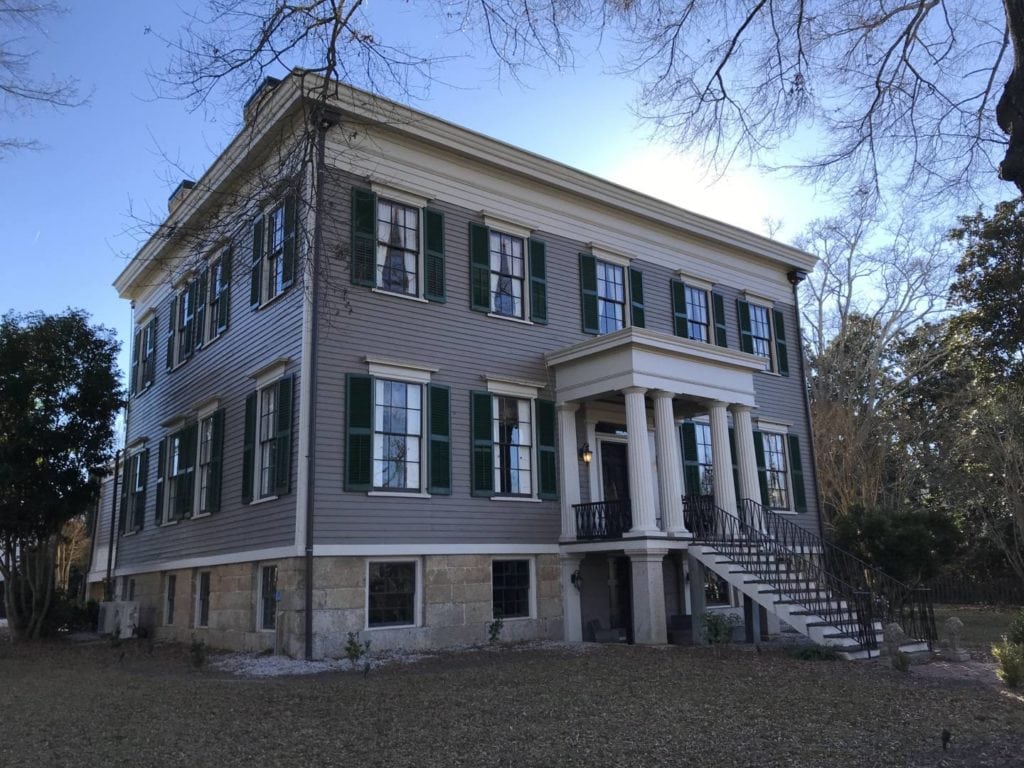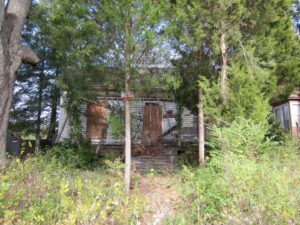The Revolving Fund

The Sayre-Alford House in Sparta was beautifully rehabilitated in 2016. Its buyers were working on the reconstruction of the Hancock County Courthouse, a Places in Peril site, when they discovered the diamond in the rough.
In 2023, The Georgia Trust celebrates its 50th anniversary and over 30 years of the Endangered Properties Revolving Fund program, which has helped to preserve 50 architecturally and historically significant buildings across the state by providing an effective alternative to demolition or neglect. In three decades of activity, the program has saved historic houses, a handful of commercial buildings, two historic hotels, a church and a jail in twenty-six counties.
So, what exactly is the Revolving Fund? And how does it work? A revolving fund is a pool of capital used by the Trust to acquire endangered historic properties in order to secure their architectural integrity and historic building fabric through real estate sales to preservation-minded buyers. When the Georgia Trust sells a property through the program, a preservation easement and rehabilitation agreement are placed on the deed of the property, and the buyer agrees to fix up the property according to the Secretary of Interior’s Standards for Rehabilitation. Proceeds from the sale of property are returned (or revolved) to the fund, enabling the acquisition of more endangered properties. In short, the program allows the Trust to intervene directly in the real estate market when there is an opportunity to save a building. As former board chair, and long serving member of the Revolving Fund committee, Bill Peard noted: “Through the Revolving Fund, the Georgia Trust can marshal resources and expertise to save and enhance individual historic assets throughout the state and protect them for use by future generations. The Revolving Fund is where the action is!”

The Johnson House in West Point sold through the Revolving Fund in 2015. Its new owners transformed the property.
Throughout the 20th Century revolving funds have proven to be effective tools for preservation organizations around the country. There are approximately 65 active preservation revolving fund programs in the United States and several very active programs in the state of Georgia. In 1956, the Historic Charleston Foundation, inspired by earlier work of individual preservationists, established the first formal Revolving Fund for historic preservation in the United States. Other local preservation nonprofits soon followed suit, creating their own revolving funds. In Georgia, the Historic Savannah Foundation’s Fund was created in 1959 and remains active today, as well as several other locally focused programs in Augusta, Macon, Columbus, and Morgan County. In 1977, the North Carolina Revolving Fund (now Preservation North Carolina) established the first state wide Revolving Fund program, which served as a model for The Georgia Trust in 1990.
The early history of the Trust’s revolving fund shows the unique nature of a statewide program. Covering a state as large as Georgia (the largest state east of the Mississippi River), with a deep and diverse history naturally creates a diversity of styles and types of buildings to be preserved. The first property revolved, purchased in 1990 and sold in 1991, was a c. 1820 Federal style house in Sparta. The second, donated a year later, was a vernacular log dogtrot in Heard County donated by the Inland Rome Company from a large tract of land intended for timbering. Also in 1992, the Coca-Cola company sold the Camak House (c. 1834) in Athens to the Trust through a bargain sale. By 1994, thanks to a sustained capital campaign and successful property sales, the Revolving Fund had reached its initial goal of $500,000.
The Revolving Fund program continued its activity through the 1990s, with the Trust purchasing its first property outright in 1996 – the Cabaniss House in Jones County (c. 1806). The tripartite house was of such architectural significance – but in such deteriorated condition – the Trust purchased the property and undertook a stabilization and exterior restoration. The project was a rallying point for the program and led to significant growth of the Revolving Fund. In 1998, the Woodruff Foundation offered a matching grant to build the revolving fund if the Trust could raise $500,000 in one year. Through the generosity of many individual donors and foundations, the match was raised and the revolving fund capital increased by $1,000,000.
Building the fund was important, but the primary benefit of an established fund is the sustained ability to save historic resources. Over the life of the program, the Trust has worked strategically with partners around the state to preserve important local landmarks and create opportunities that might catalyze further preservation. Two historic hotels in south Georgia are prime examples of this strategy. Both the Bon Air Hotel in Bainbridge and the Colquitt Hotel in Moultrie occupy prime locations on each town’s square. By the late 1990s, each had fallen into disrepair and were in danger of being lost through neglect. The Trust stepped in and was able to negotiate sales to a preservation developer who rehabilitated both projects using historic tax credits and helping to stabilize two beautiful historic downtowns. A decade later, in 2010, the Trust found itself dealing with a behemoth that had been the bane of so many local mainstreets: Wal Mart. A new store was to open in Forsyth, which, according to company policy regarding commercial ‘buffer zones’ would have required the demolition of three historic residences. Thanks to determined local advocacy in partnership with the Trust, Wal Mart was convinced to donate the three houses to the Trust to be stabilized and sold through the Revolving Fund program. The Georgia Trust has also worked to grow the number of organizations utilizing revolving funds in the state by teaching and mentoring local organizations looking to establish their own preservation programs, resulting in several saves in rural Dekalb County through partnership with the Arabia Mountain Heritage Alliance, and Morgan County, where the Madison Morgan Conservancy has undertaken its own program with the Trust’s assistance.
The Georgia Trust’s Revolving Fund continues to grow and evolve, as we have just recently completed a rehabilitation project in the Pittsburgh neighborhood of Atlanta, as part of the West Atlanta Preservation Initiative, which will soon join the list of properties saved and protected through the work of the Georgia Trust.
Thanks to the long-term commitment of the Board of Trustees and numerous staff over 30+ years of service, the Endangered Properties Revolving Fund has had a clear impact on preservation of Georgia’s historic resources.
Learn more about the Revolving Fund and watch a video about how it works on our Revolving Fund webpage.
Support the work of the Georgia Trust and programs like the Revolving Fund by Becoming a Member today!
See more about the history of the Georgia Trust on our 50th Anniversary blog Celebrating 50.





